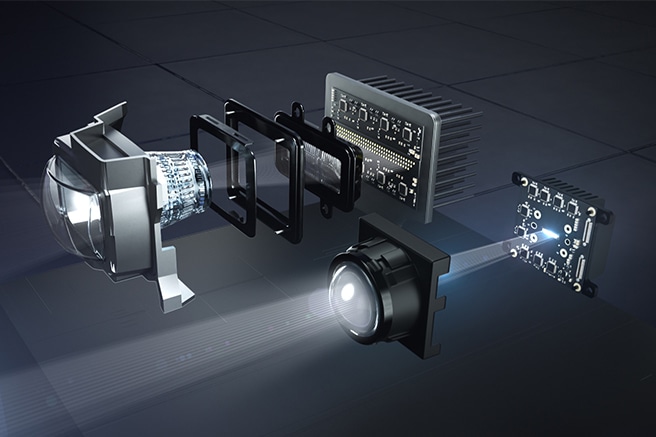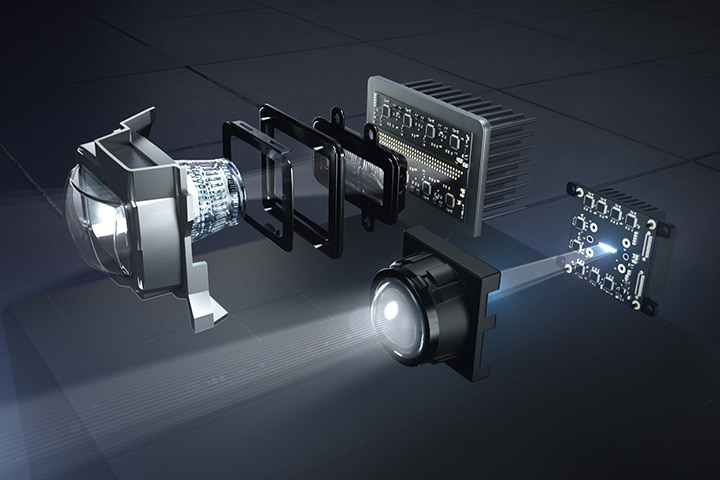[Safety & Beyond – Part 2] The Most Compact, Powerful Light Source for Slimmer Automotive Designs


The development of slimmer, more contemporary automotive headlamps is being propelled by the evolution of safety in mobility, and the automotive industry’s push to create unique brand identities. In response to this market shift, demand is skyrocketing for more compact light sources that can be used in building sleek, futuristic headlamps.
The most recent development in the automotive lighting industry has been the intelligent headlamp, also known as the Adaptive Driving Beam (ADB). This transformative new technology enhances driving safety with the help of individually-controlled light segments, leading the industry to seek out more advanced light sources.
Among the offerings to date, Samsung’s PixCell LED represents the ‘perfect’ fit for Adaptive Driving Beams. It has an extremely small light emitting surface (LES), which is roughly 1/16 the size of a conventional LED. The key to this impressive feature is Samsung’s Monolithically Integrated LED technology. Most LED light sources for ADBs on the market are composed of separate LED packages. However, Samsung takes an entirely new approach by devising a single light source made up of over 100 individual segments. Each is separated by a thin silicon wall, minimizing the space between segments to less than 25μm, which more than satisfies the industry’s strong desire for slimmer lamps.
Thanks to its compact LES, the PixCell LED can operate with an extremely small printed circuit board (PCB) and heatsink, allowing the entire module size to be reduced by 50%. The compact LES also enables direct projection of an LED light, eliminating the need for a primary optic. All in all, the total optic system is not only simplified, but dramatically slimmed down, too.
Besides slimming down the optic system, increasing design possibilities and improving operations, the Samsung PixCell LED significantly eases a lamp’s environmental footprint. With global warming, regulations regarding carbon emission are becoming increasingly strict, in improving fuel efficiency and battery efficiency. These are no longer choices, but absolute necessities. Faced with such considerations, slimmer parts are an important technological trend that reduces vehicle weight, minimizes energy waste, and helps to boost driving efficiency. The PixCell LED is particularly meaningful in this respect.
Because of the Samsung’s PixCell LED, automotive lamps can deliver excellent performance without ignoring the growing demand for striking, modernistic design. Engineered using Samsung’s world-class semiconductor technology, the PixCell LED solution offers exceptionally well-engineered and beautiful headlamps with a competitive edge. By transforming the internal structure of a lamp, the PixCell LED is bringing advanced automotive lamp technology one step closer to a sustainable future.


 Copyright ⓒ 1995-2023 SAMSUNG All Rights reserved.
Copyright ⓒ 1995-2023 SAMSUNG All Rights reserved.